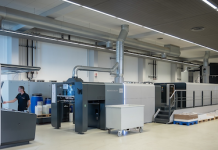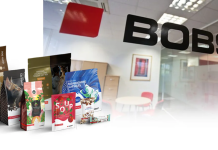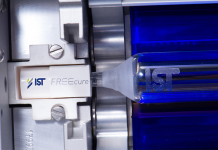Paper is critical to the printing process. It is after all, both the raw material and the end product. Nowhere is that more apparent than when transitioning to production inkjet printing, where paper selection has a tremendous impact on the production quality and profitability of an inkjet solution.
The same image printed on different ‘inkjet suitable’ papers will require different amounts of ink to produce similar output quality. As the ink density or total area coverage (TAC) increases, some papers may not perform well, leading to bleed-through or changes in the paper surface that could interfere with the proper operation of finishing equipment.
Paper also has a tremendous impact on the yield of a litre of ink. Even among papers tested for inkjet production, the difference in ink use for the same application and similar quality could vary by up to 50 percent or more. That extra ink usage can add up to hundreds of thousands of Rand within a year or two in a high-volume shop. You may be thinking, ‘So why wouldn’t I just buy the paper that lets me use the least amount of ink?’ Good question. The challenge is that the papers that allow you to use less ink cost more money, often substantially more. In general, inkjet papers can cost nearly twice as much as offset papers. So, the challenge is to strike a balance between target quality, minimised ink use and paper cost.
Given the critical importance of selecting the right paper on the ROI, paper and inkjet manufacturers are stepping up to support customers with testing, and it’s not a small job.
The first step is to test a paper’s suitability for inkjet printing in general, looking at issues like:
– Colour density.
– Colour gamut (treated papers generally enable a larger colour gamut than standard uncoated papers and a pigmented paper surface will expand the gamut even further).
– Line quality and colour to colour bleeding.
– Print uniformity (mottle, coalescence).
– Ink drying behaviour.
– On-line abrasion.
– Water-fastness.
– Lightfastness.
Based on its performance in these tests, a paper may be deemed suitable for inkjet use, but that’s not the end of the process by a long shot. Transaction printers and marketing fulfilment companies have very different paper needs, even running on the same press. Without knowing what the customer wants to use the output for, it is impossible to say whether or not a certain paper is suitable.
This, in turn, calls into question the practice of ‘certifying’ papers for inkjet. There may be certified papers that are not suitable for all inkjet applications and non-certified papers that are perfectly appropriate. At Océ, we prefer to say that we evaluate papers for suitability for inkjet, and then help our clients to select the right paper for their particular needs. We have tested hundreds of papers and we work closely with the paper mills to give feedback on the performance of specific papers and to communicate the needs of our customers. There may be a broader choice of papers available than you think.
If you are going to tackle the paper testing process yourself, we would recommend a disciplined process including:
– Development of a ‘test suite’ that is sensitive to the unique issues of different presses and representative of the applications to be printed in production.
– Objective evaluation criteria that can be measured with a spectrophotometer.
– Subjective criteria to be evaluated by a pre-selected group of ‘judges’.
Once you start comparing different papers, different measures and different opinions, the identification of metrics and the approval criteria emerges. From here, you will learn what is acceptable and what is not acceptable and then identify your upper and lower control limits.
Of course, the press and paper combination does not tell the whole story. Once an acceptable paper is profiled, this information must be used properly and optimally throughout the whole colour workflow process from design to print. The right paper, profiled correctly, can still print badly because of bad design, colour space or improper PDF format. Remember, you get out of it what you put in, across the whole workflow. And in the case of paper, when you put the right effort into testing and selection, what you get is better colour with less ink.





















